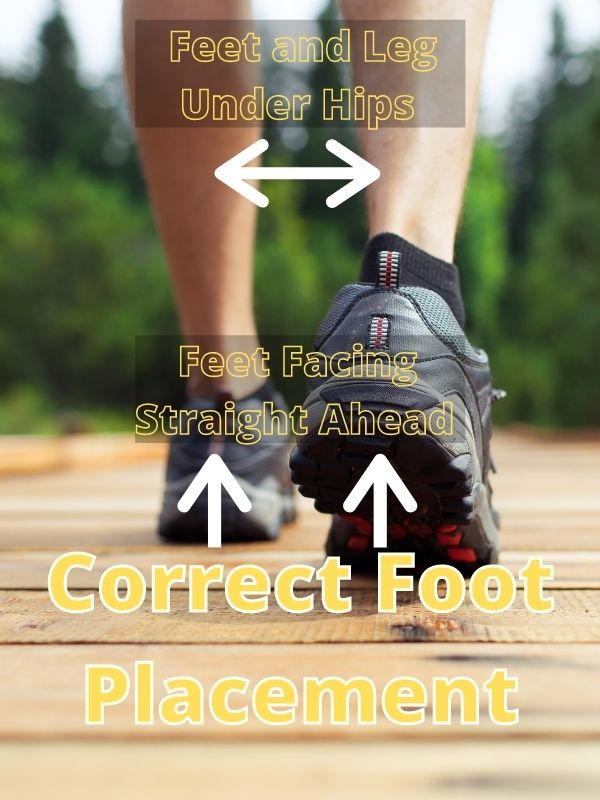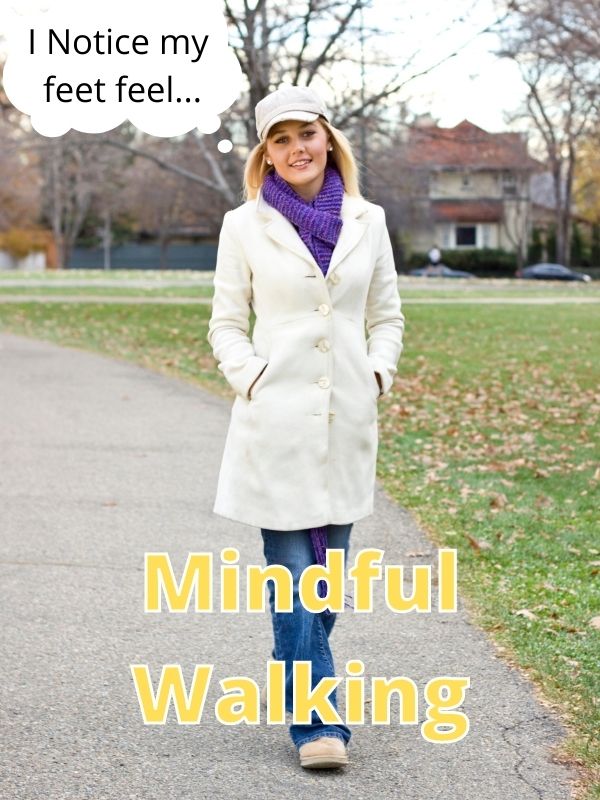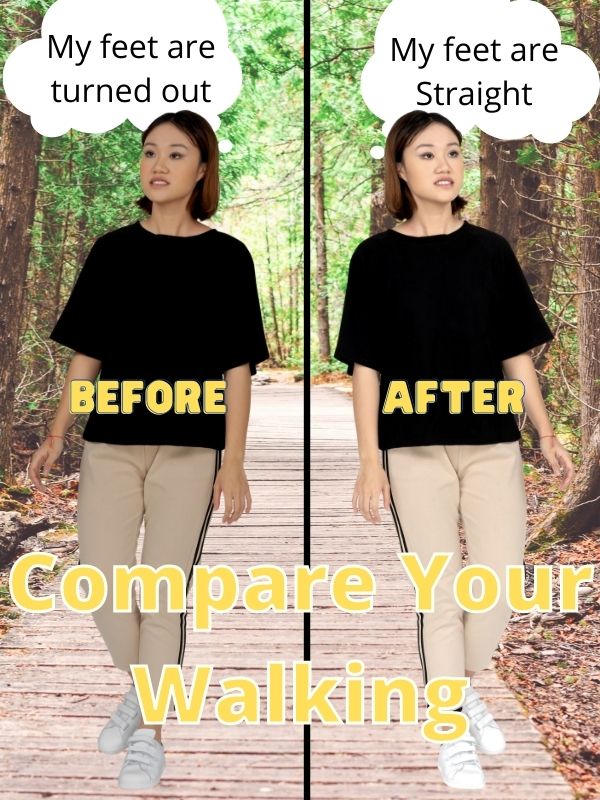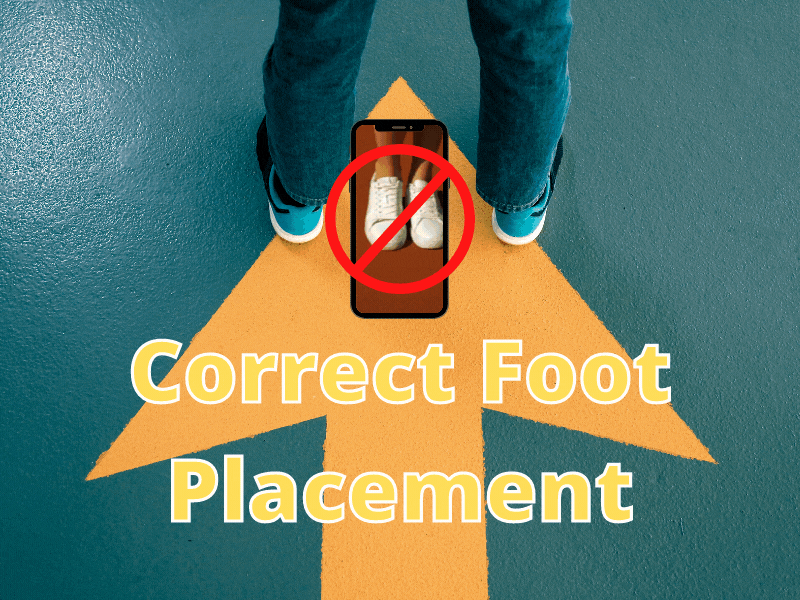(Disclaimer – Not medical advice) Walking is a natural motion. By around a year old, we all learn to stand up and stumble forward. With a bit more practice walking becomes a daily motion, however, not everyone walks the same way. The shape of our bodies, weight, height, and history of injuries all impact the way we walk. The way we walk then impacts the way we feel after walking.
To walking correctly we must place our feet directly forward and roll our feet from the heel to the toes. The feet should be centered under each side of the hip, so there’s a distance between them. A bit of pressure on the outside edge of the foot is normal, but not on the inside.
Improper foot placement can lead to discomfort in the ankles, knees, hips, and even back. These complications can even manifest into twisted ankles or stress fractures if the use of improper foot placement continues for too long. Luckily, foot placement is self-diagnosable in most cases and you can even improve your stride!
It only takes a few quick steps to enjoy a lifetime of proper walking and comfort, so let’s get started.
What Does Proper Foot Alignment Look Like?

The first step to improving your foot placement is understanding what proper foot alignment looks like so you can assess and emulate it in your own movements.
The ideal step is oriented in a forward-facing position. That means the toes face directly forward, not inward towards each other or outward. The feet should also stay centered, beneath their associated hips, throughout each step. This position allows for more balance and efficient transfer of energy into movement through each step.
After the feet are properly positioned in relation to the body it comes time to focus on their interaction with the earth. After your foot is lifted it will begin to descend to contact the earth in a fluid motion. At contact, the bottom of the heel should meet the earth first.
This sensation can be firm or soft, but it should never be sharp or too far back on the heel. Then the foot should roll directly forward towards the toes. This rolling motion should feel centered and may have a slight increase in pressure on the outer edge of the foot.
There should be no pressure focused on the inner part and arch of the foot at any time during walking.
Once the pressure and contact are concentrated on the ball of the foot you should notice it is fairly even across the footpad in that area. That pressure will quickly transfer to the toes, and most specifically the big toe. The toes are a key factor in balance and energy transfer.
The big toe holds weight and provides push-off with each step while the smaller toes spread out to provide balance. Proper foot placement will result in stable contact throughout the toes at the end of each step.
Mindful Walking – Check your foot placement

Now that you know what to look for when it comes to correct foot placement it is time to assess your own. Walking is often such a quick and natural motion that we don’t focus on how it feels, so we are going to start by focusing on and slowing down that motion.
Take a few steps barefoot to get the best sense of where you are making contact and feeling the most pressure on your feet. After a few steps at your natural speed, start to slow things down and focus on the sensations coming from your feet.
Note the order in which your heels, the balls of your feet, and your toes make contact with the ground. Visually observe a few steps to assess how well aligned your feet are under your hips and if they tilt out or in at all.
Don’t worry about changing these things immediately, instead take the time to fully observe your walking patterns and even record them (use a smartphone or camera) for future reference. It is also important to record any painful sensations you experience while walking.
For example instability or pain in the ankles could be from too much pressure on the arches of the feet or knee and back pain could be resulting from excessive pressure on the outer edge of the foot. Pain serves to notify you when something is wrong so you can make the necessary changes to your walking patterns.
Tip: One of the best ways to focus on the sensations you experience while walking is to take some time to walk mindfully. This is a practice similar to meditation where all your focus is centered on personal experience and physical sensation, the only difference is you are in motion. This practice will provide you the clearest concept of your foot placement patterns.
Foot Placement Improves Your Walking Experience

Once you understand the proper positioning of your feet and the way you currently position your feet it becomes easy to compare the two and fix any problems you are experiencing. This can take time, but through simple awareness of how you are walking, you can slowly and consciously alter your walking patterns until the proper placement starts to feel natural.
Tip: Your shoes can deeply impact your foot placement. Take the time to mindfully walk in shoes before walking in them for long distances. This will allow you to determine if your shoes are improving or exacerbating complications you have with foot placement, before impactful activity.
Not everyone has the same body or foot shape and some conditions may make ideal foot placement impossible for some individuals through self-evaluation alone. If this is the case for you it is best to consult a doctor to discover your best foot placement.
Ankle, Knees, Hip, and Back During Foot Placement
Everyone is different and that means we all have different body types, yet we need to walk in approximately the same way to maintain healthy joints. It all starts with the feet, the foundation of our body.
Once we have a good foundation we can enjoy the benefits of better joint alignment and better muscle support. As mentioned before, our shoes can help align our feet correctly or incorrectly, so choosing a shoe with the right arch support is important.
The Ankle
We can ensure our ankle is correctly aligned once we’ve corrected our foot placement and have the right arch support. One principle to consider is the development of our foot muscles.Thisis important to help strengthen our arch and prevent foot problems in the future.
As we exercise our foot, it can help strengthen the ankle and support it. People who exercise with their feet a lot may need to stretch the foot and ankle to ensure muscle isn’t pulling the bones out of alignment.
The Knees
Just as important as the ankles are the knees. We can support our knees in the same manner as the ankle, by strengthening the muscles around them. As long as the feet and ankles are supported and aligned correctly, our knees will be able to be aligned correctly also.
As you walk and roll your feet from heel to toe, you are allowing the forces of the body to be distributed to the arch and foot so it can absorb the impact without any problems.
Once we start to impact the ground more forcefully or we impact the wrong part of our feet (or just too hard in general), our knees may be on the first joints that are affected.
That’s why walking correctly (to distribute forces in the right places) and muscle development (to help take on some of the forces) are helpful for your joints.
The Hips and Back
The hips and back are the next joints that are impacted by correct foot placement. Whether you’re walking or running, you want to place your feet forward and move so you are impacting your joints less and allowing your muscles and arch to absorb each impact with the ground.
Some people get into the habit of keeping their legs too straight during walking and running, creating a much greater impact on the joints.
Depending on how forceful the impact and how the legs are moving, it can put lots of pressure on the hip joints. If your hips start to hurt, you may start to compensate by aligning your upper body differently. If this happens you might start to feel back strain.
I think the best thing to do if you have ankle, knee, or hip pain is to figure out if your walking or running position is impacting your joints and checking that you have the right shoes.
I like the video below that talks about choosing the right shoe and arch support for your foot. It’s worth watching if you are planning on buying shoes.
You will want to let your body heal and then analyze what you are doing right and what could be improved. If you still don’t know what’s going on, it may have nothing to do with foot placement, your shoes, or how you are moving.
Seeing a doctor can give you insight into what may be happening on the inside of your leg, such as arthritis.
Foot placement is an unconscious action we take each day. If you have issues with your joints or you think you might in the future, taking time to analyze your movement can give you insight into how your movements may be affecting you.
Thanks for visiting Helpshoe.com
Citations:
- Palinski-Wade, E. (n.d.). Correct Walking Techniques. Retrieved November 03, 2020, from https://www.dummies.com/health/exercise/cardio/correct-walking-techniques/
- Speck, J. (2019, May 11). Walking Foot Placement. Retrieved November 03, 2020, from https://www.fixflatfeet.com/walking-barefoot-using-correct-foot-placement/

